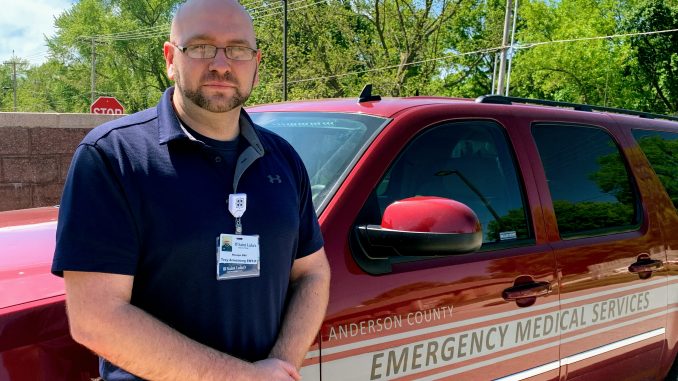
GARNETT – The new head of Anderson County’s Emergency Medical Services Department is an Iowa native whose experience runs from Midwest farm country to the sparsely populated high-desert frontier area of southern Oregon.
Troy Armstrong took over the post as director of the county’s EMS service earlier this month, coming from a post in Oregon where he worked as a contractor to help transition a local all-volunteer emergency service to a paid staff managed similarly to Anderson County Hospital’s arrangement with Saint Luke’s Health System. Previous to that he worked in Warrensburg, Mo., and actually started his career by getting his EMT basic certification his senior in high school. The differences he said between Anderson County and his most recent post in Oregon – especially in the expanse of the service area – are pretty pronounced.
“Our service area here in Anderson County is about 584 square miles,” Armstrong said. “The service area I was responsible for in Oregon was 5,800 square miles. The population density was much lower.” He said it wasn’t uncommon for ambulance calls in that area to run up to an hour in response time in a region of combined high-desert, forest and mountain terrain.
“It was considered a ‘frontier county’ by the federal government,” Armstrong said. “We had less than one person per square mile.”
One of the defining advantages locally is the overall emergency system designed to handle various situations, Armstrong said. Anderson County has the advantage of having a system built from the emergency dispatchers on up, trained to determine types of emergencies and relay to a network of volunteer first responders established in Anderson County’s rural communities to render more immediate aid until an ambulance crew can arrive at a scene.
Armstrong said as the new head of the post his first priority is to fill a couple of vacant positions – the local service is in need of an additional full time paramedic and a part time paramedic as well – and to settle into relationships with the community of emergency personnel he’ll be working with on a regular basis. He’d also like to develop initiatives to ferret out and encourage budding EMS talent among the high school and young adult age groups in hopes of steering them toward EMS careers and maybe staff positions with the local service.
He said his overall goal is that community members feel comfortable enough with the EMS service and with emergency management in the county in general that they never hesitate to call if they’re in need.
“That’s the important thing,” Armstrong said. “If we get there and they don’t need us that’s fine, but I’d rather they had called and didn’t need us than to need us and not call.”
